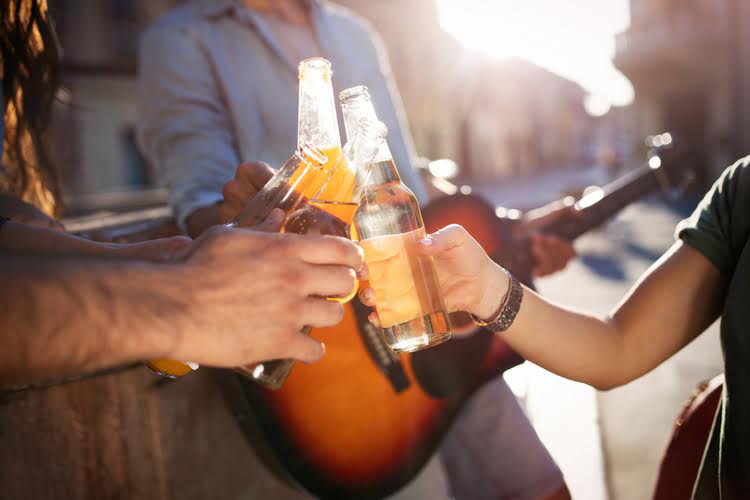The producers, contributors, sponsors, editors, and authors of RehabCenter.net have no responsibility or obligation to anyone (person or entity) for any harmful consequences that may happen, directly or indirectly, as a result of the content or information provided on RehabCenter.net. I think going after work is going to be unrealistic because I’m most tired and hungry then. I’m going to try this morning class that looks like fun tomorrow.” In this case, we not only are more likely to go the gym again, but we’re also strategizing for success and feeling OK about ourselves. He is a member of over a dozen professional medical associations and in his free time enjoys a number of Sober House different activities. Although now retired from racing, was a member of the International Motor Sports Association and Sports Car Club of America. Dr. Bishop is also a certified open water scuba diver, he enjoys fishing, traveling, and hunting.
NEARBY TERMS
- In contrast to the former group of people, the latter group realizes that one needs to “learn from one’s mistakes” and, thus, they may develop more effective ways to cope with similar trigger situations in the future.
- The desire for immediate gratification can take many forms, and some people may experience it as a craving or urge to use alcohol.
- For example, our data demonstrate that the lapse progression process is highly variable both between individual participants and across momentary circumstances.
- This success can then motivate the client’s effort to change his or her pattern of alcohol use and increase the client’s confidence that he or she will be able to successfully master the skills needed to change.
While some assert that relapse occurs after the first sip of alcohol or use of another drug, certain scientists believe it is a process which more closely resembles a domino effect. Social-cognitive and behavioral theories believe relapse begins before the person actually returns to substance abuse. Rather than labeling oneself as a failure, weak, or a loser, recognizing the effort and progress made before the lapse can provide a more balanced perspective. For Jim and Taylor, this might involve acknowledging the months of sobriety and healthier lifestyle choices and understanding that a single incident does not erase that progress. Even when alcohol’s perceived positive effects are based on actual drug effects, often only the immediate effects are positive (e.g., euphoria), whereas the delayed effects are negative (e.g., sleepiness), particularly at higher alcohol doses. Asking clients questions designed to assess expectancies for both immediate and delayed consequences of drinking versus not drinking (i.e., using a decision matrix) (see table, p. 157) often can be useful in both eliciting and modifying expectancies.

How does relapse affect the brain?
Work of this sort may allow us to conceptualize the AVE as a multivariate, latent construct that evolves over the course of the lapse-relapse process. The RP model of relapse is centered around a detailed taxonomy of emotions, events, and situations that can precipitate both lapses and relapses to drinking. This taxonomy includes both immediate relapse determinants and covert antecedents, which indirectly increase a person’s vulnerability to relapse. Based on the classification of relapse determinants and high-risk situations proposed in the RP model, numerous treatment components have been developed that are aimed at helping the recovering alcoholic cope with high-risk situations. The results of recent research, particularly the RREP study, likely will lead to modifications of the original RP model, particularly with regard to the assessment of high-risk situations as well as the conceptualization of covert and immediate antecedents of relapse.
1.3. Harm reduction integrated in SUD treatment
- The Abstinence Violation Effect is an important psychological phenomenon that can derail recovery from addiction.
- Such positive outcome expectancies may become particularly salient in high-risk situations, when the person expects alcohol use to help him or her cope with negative emotions or conflict (i.e., when drinking serves as “self-medication”).
- According to RPM, each lapse in the process represents a potential target for interventions designed to bolster coping resources and renew commitment to change.
- In contrast, several models of relapse that are based on social-cognitive or behavioral theories emphasize relapse as a transitional process, a series of events that unfold over time (Annis 1986; Litman et al. 1979; Marlatt and Gordon 1985).
Looking what is abstinence violation effect back does have its benefits in that it helps us identify weaknesses in our program. The problem is that abstinence violation effect magnifies these weaknesses and prevents us from seeking solutions. Our first instinct should be to figure out a relapse prevention plan that addresses the faults we have identified.

When do Habits Become Addictions?
Harm reduction psychotherapies, for example, incorporate multiple modalities that have been most extensively studied as abstinence-focused SUD treatments (e.g., cognitive-behavioral therapy; mindfulness). However, it is also possible that adaptations will be needed for individuals with nonabstinence goals (e.g., additional support with goal setting and monitoring drug use; ongoing care to support maintenance goals), and currently there is a dearth of research in this area. An additional concern is that the lack of research supporting the efficacy of established interventions for achieving nonabstinence goals presents a barrier to implementation. Covert drug addiction treatment antecedents and immediate determinants of relapse and intervention strategies for identifying and preventing or avoiding those determinants. If stressors are not balanced by sufficient stress management strategies, the client is more likely to use alcohol in an attempt to gain some relief or escape from stress.
This suggests that treatment experiences and therapist input can influence participant goals over time, and there is value in abstinence violation effect engaging patients with non-abstinence goals in treatment. Unconscious cravings may turn into the conscious thought that it is the only way you can cope with your current situation. Gordon as part of their cognitive-behavioral model of relapse prevention, and it is used particularly in the context of substance use disorders.
How to Prepare for Trauma Therapy Work in Philadelphia
A recent qualitative study found that concern about missing substances was significantly correlated with not completing treatment (Zemore, Ware, Gilbert, & Pinedo, 2021). Unfortunately, few quantitative, survey-based studies have included substance use during treatment as a potential reason for treatment noncompletion, representing a significant gap in this body of literature (for a review, see Brorson, Ajo Arnevik, Rand-Hendriksen, & Duckert, 2013). Additionally, no studies identified in this review compared reasons for not completing treatment between abstinence-focused and https://wp-test-004.proatv.dk/2021/01/19/the-best-way-to-detox-from-alcohol-a-step-by-step/ nonabstinence treatment. The term “abstinence violation effect” refers to the emotional response experienced by individuals who have relapsed after committing to abstain from a certain behavior, such as substance abuse or unhealthy eating habits. This effect often involves feelings of guilt, shame, and self-blame, which can further perpetuate the cycle of relapse.
